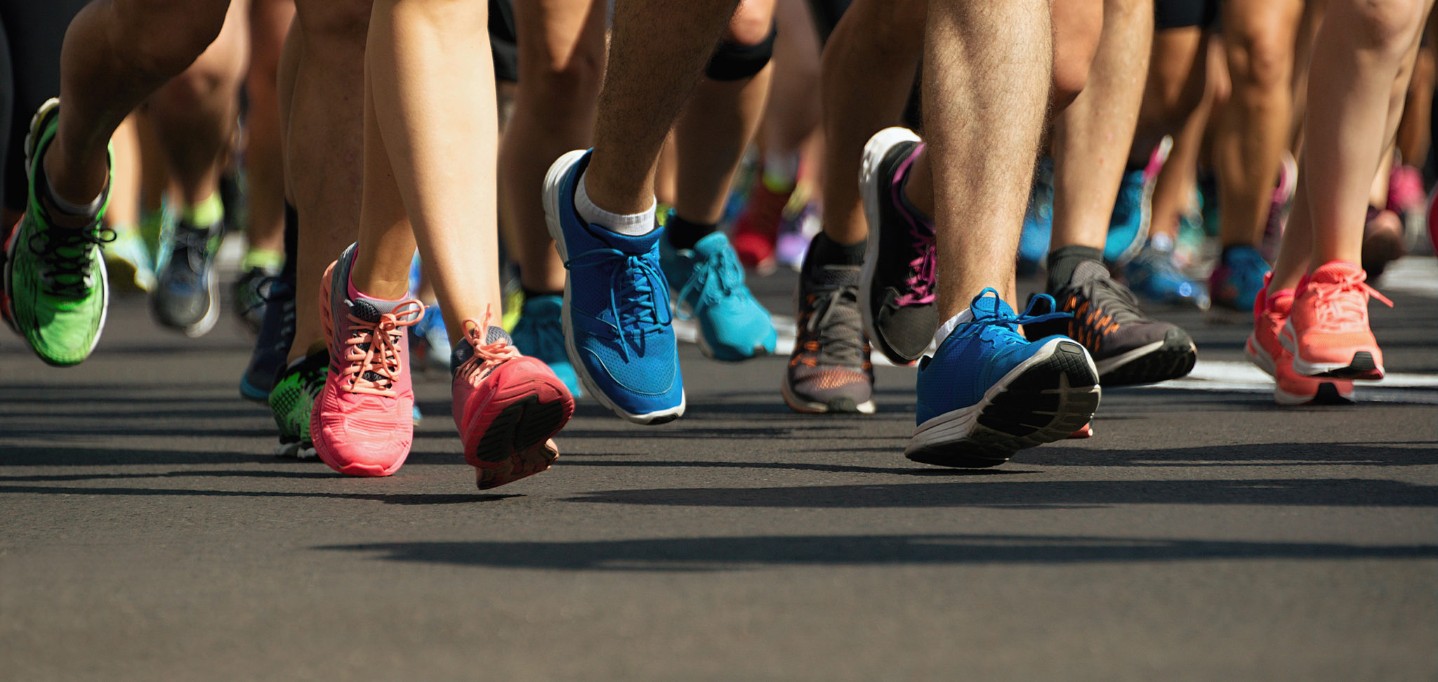As many of you know, each week I post a new article on some topic that is germane (at least loosely) to the world of health and often pertaining specifically to the field of cardiovascular medicine. Despite this being called a “blog” most of the stuff I write is really not bloggish in nature; for example, I don’t typically spout my opinions about political issues or post photos of my pet cat or detail the exploits of my sci-fi book club or . . . well, you get the picture. I have tried to limit my writing to topics of a more general interest and avoid posts of personal nature.Today, for a change, I’ll indulge in a little bloggish activity. I’ve had so many people ask about my recent Boston Marathon that I decided to consume a few of the world’s electrons and post some of the highlights of my recent trip.
The famous Boston Marathon course starts 26 miles out of Boston and runs in an easterly direction toward the city. It rolls through scenic countryside and antiquated shires on its way into Beantown. If you happen to be a 21-year-old farmer from Kenya, you might finish the course in a record time 2:05:52. If, however, you’re a middle-aged cardiologist from Omaha you’ll probably take just a little longer.
The weather on race day was absolutely perfect for running: forty-five degrees, slight wind out of the northwest, and sunny. One of the challenges of this particular course is that it is run every year on Patriots’ Day which happens to fall in the couple of weeks of spring when the climate is unpredictable and often plain awful. We were luckier, and that may be the reason the winning times were so fast.
My wife, Cheryl, having been sidelined by an injury, was back to running no more than 5 weeks ago. Last fall she was diagnosed with a fractured sacrum and was limited to light walking up until late winter. When we signed up for this marathon last year it was our intent to run the course together, and now, with her being hobbled by her injury, I was focused on sticking with her throughout the whole race in order to talk her into dropping out if she started developing any hip pain. Fortunately it never came to that.
As the race started, the 25,000 participants were corralled into the small town of Hopkinton (population 13,346) waiting for the gun to fire. From that point all the way to Boston—for the entire 26.2 miles—there wasn’t a single inch of space not taken up by a cheering fan. The Boston Globe reported that at least 500,000 people turned out to watch the race and I think I saw every one of them. I have run many races but I’ve never seen a sight quite like that. It reminded me of the Tour de France bicycle race and how the spectators crowd around the riders as they slowly pedal up the mountain stages. All along the race the spectators screamed, yelled, rang cowbells, and offered water, orange and banana slices, and quick snacks. I don’t think it mattered to any of them that we were nowhere near the front of the race and my suspicion is that the last place finisher got the same reception as the winner did.
The course wound gently through the rolling hills and towns of rural Massachusetts. As a cardiologist I was pleased to be able to take a slow tour of the town of Framingham, the site of the world’s most famous ongoing cardiovascular epidemiology studies (I was also tempted to take a pit stop at the Framingham McDonalds just for the irony of it).
We passed by two colleges on our route. The students of Wellesley College, an all-women’s school that boasts Hillary Clinton and Madeleine Albright as alumni, stuck to their annual tradition of cheering at the sidelines while holding homemade signs urging runners to stop in for a quick kiss. “Kiss me, I’m Irish,” “Kiss me, I’m from Atlanta,” “Kiss me—I won’t tell your wife.” I saw a couple runners succumb to the temptation of these Wellesley sirens but you’ll be pleased to know I didn’t break stride (I did try momentarily to distract my wife—“look, dear, there’s a squirrel!”—but I think she was on to me).
The Boston College crowd in Chestnut Hill was a little rowdier (and less tempting to kiss) and the yelling and screaming were nearly deafening. One of our friends told us she took a cup from one of the bystanders for a quick drink of water only to find that it was actually beer. She ran surprisingly well for the next couple of miles.
As we neared the city the crowds and the cheers intensified, which was particularly helpful as we climbed the last few hills into Boston. The famous Heartbreak Hill at mile 20 wasn’t quite as alpine as I had envisioned it but was still a challenge after running for two and a half hours. Our pace slowed considerably at that point and we did nothing more than simply hang on for the last 6 miles.
As we rounded the corner into the final stretch it was really the crowd that kept us putting one foot in front of the other. While Cheryl was focused on the finish line ahead I was trying to soak in my surroundings—here I was, finishing the world-famous Boston Marathon, with my wife next to me and surrounded by a hundred thousand cheering spectators. I was having so much fun and grinning so widely that my facial muscles were fatiguing faster than my legs.
We held hands as we crossed the finish line (corny, I know, but it was actually pretty romantic—probably at least the second most romantic hot and sweaty thing you can do with your wife) and looked at the time on the clock. My wife’s goal had been to run fast enough to be able to qualify for next year’s Boston by posting a 3:40 or better. We crossed the line at 3:37.
Others weren’t so lucky. Another runner told me of a woman who collapsed less than 400 yards from the finish line and who couldn’t get herself to her feet despite help from other runners—she left on a stretcher. Thankfully no one died in this year’s marathon, but the medical tents always seemed pretty full.
The next morning as we dragged ourselves out of bed for our 6:30 a.m. flight we found that our legs didn’t seem to want to cooperate. I’m still limping a little—especially going down stairs—but getting better each day. Cheryl says she’s done with marathoning and plans to stick with exercise that’s a little less stressful on her hip. I’m already looking forward to taking another crack at the Boston course next year. It was just too much fun to do only once.





